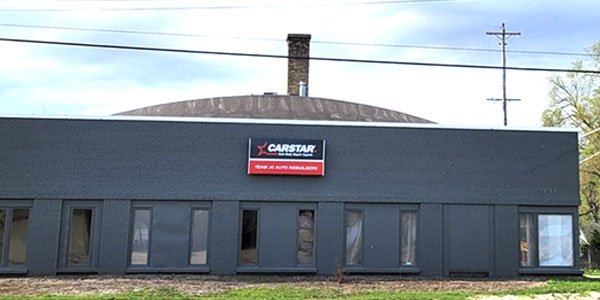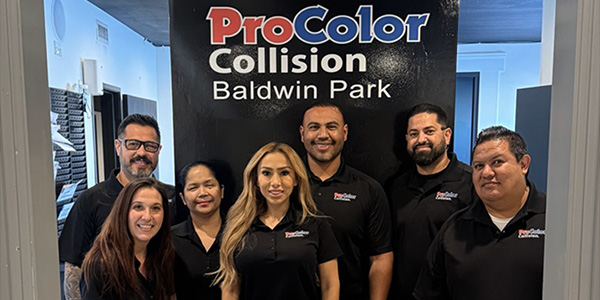I recently received an email from a shop owner who wanted to discuss a business situation and see if I might be able to give him some advice.
Frank (as I will call him) was in his early 60s and had a partner who wanted to retire and have Frank buy him out. Frank was more than willing to do this yet was looking to exit himself at some point and have his son take over. While he and his partner had worked out a deal for their buyout, he was unsure on how to proceed. Given the complexities in creating a vision and plan for their future, I thought it would be appropriate to discuss the first — and most important — step in this planning
process.
Three Questions
As Frank was beginning to lay out the details, I stopped him and said, “Frank, before we talk about the numbers, I’d like to ask you three questions. Is that okay?”
“Sure,” he replied, wondering where I was going with this.
“Great!” I responded. “Let’s begin with the first question: When do you want to exit the business? But before you tell me, I think I can guess. I’ve written that date on a card.”
Frank had not expected a magic show and doubted an advisor he had never met could read his mind, but he answered honestly.
“I’d like to be able to walk away in five years.”
So, I showed him the card: it said five years!
“C’mon, how did you know that?” Frank asked. “I’m not even sure I knew that for sure.”
“Easy,” I replied. “If I asked you the same question last year or next year, your answer would probably be the same. Most shop owners pick five years because it’s comfortable. Five years is soon enough to show that they’re serious but far enough away to avoid taking any immediate action to plan. Am I right?”
“That’s probably true,” Frank said.
I continued, “I can probably also guess the answer to the second question: How much income would you like each year after you exit? My guess is that it is the same amount you’re making now.”
“Yeah, you got that right!” Frank answered.
“Okay, well you already answered my third question which is, ‘Who do you want as a successor?’ You already told me it’s your son, and it’s great that you have someone selected. Many owners I talk to have no idea who that successor will be. So, as a follow-up, can I ask, ‘Does your son have the tools, systems and key people necessary to continue to grow this shop?’”
Frank thought about it for a moment and said, “You know, I’d like to think so, but I’m not sure.”
Hazy Goals
Frank is no different than most other shop owners. He knew that he wanted to exit yet set some hazy goals because he had no verifiable details about what resources he had and what his shop was really worth. Sure, he knew what he had in investable assets like his 401(k) and investment accounts, yet he didn’t know how much he could take out to sustain these assets for the rest of his life. He did know that he would need proceeds from the sale of his business to fill the gap, yet he didn’t know for sure how much he would net from the sale or transition of his business.
Frank had a general idea of how much the assets and real estate of the business but had no idea what the actual value of the business is. He had never had a proper valuation done. This poses a problem — first, from the standpoint of what he would be paying his partner to buy him out. Is he paying him too little? If so, it will benefit him, yet it could create problems in the future if his partner finds out. Is he paying him too much? Then he is taking more money away from what he could use after his exit.
The second problem is, how much would his son have to pay him to buy out Frank’s share? The son most likely does not have the financial resources to buy out Frank outright. So, how does Frank ensure that he has adequate income and not completely tap out his son, which could set him up for failure?
This is what is called the “asset gap” — the difference between the value of the financial resources Frank needs at his exit to achieve his post-exit income goal and the value of Frank’s current financial resources, which include the net proceeds from the sale of the business. Because Frank does not have a clear picture of what he can achieve, he will probably do what most owners do: kick the can down the road on the next year of the rolling five-year plan.
Five Attributes
So, this leads us to the first step of the process, which is to set goals that are broken down into manageable baby steps. These goals must have five attributes: They must be specific, measurable, attainable, relevant and timely. This process lays the foundation for creating a roadmap for a successful transition of the business. Because it’s based entirely on the owner and his or her family’s goals, the whole process becomes owner-centric.
What are the types of goals owners must quantify and set? They fall into three categories:
- Foundational. The need for financial security and independence is foundational to a successful exit or transition. Since an owner who is exiting will have little or no income from the business, the acid test for any exit plan is whether the owner can achieve financial independence no later than the date they give up control of their companies. To define financial independence, two questions that need to be answered are: “What amount of cash must I have to exit successfully?” and “How do I determine (with precision) how much I will need?” These numbers should be expressed as a pre-tax annual amount of income adjusted for inflation. As this is the most important financial analysis of your life, it calls for the involvement of an experienced financial planner.
- Universal. These goals come back to the three questions I asked Frank: When do you want to exit/transition? How much income do you want? To whom will you leave the business?
- Value-based. These goals relate to your personal values and tend to be non-monetary, less tangible and more heartfelt. In working with family businesses, I’ve found these to be the most overlooked yet, when implemented, the most impactful. These can include family legacy, owner legacy, acknowledging employees, taking the shop to the next level, minimizing taxes, maintaining culture, community involvement, quality retirement and charitable impulses.
To uncover these goals, ask yourself:
- What is my vision for my company without me?
- What is my vision for myself and my family without my company?
- Is this particular values-based goal important to either vision?
What you may discover as you think about these questions is that you do have value-based goals that dictate or influence your planning choices. Consider the following scenario:
Don is a 58-year-old shop owner who has grown weary of direct repair program (DRP) program dictates and insurance companies decreeing how he should do his work and how much he should get paid. He knows that many multi-shop owners (MSOs) are looking to expand and that he can just get a nice check and cash out. Yet, in answering these questions with his family, he realizes that his kids would love to continue the business and continue the family legacy. In addition, he has numerous employees who have been loyal to him, and there is a distinct possibility that they could lose their jobs through consolidation. Finally, his business has been a community asset and has sponsored local little league teams, provided charitable donations to local organizations and churches, and is considered a staple in the community. As a result, Don could change his mind and decide to develop a succession plan that will lead his children to take over the shop and create new systems and processes that will not make it dependent on DRPs. In addition, he may decide to implement incentives to benefit his key employees and make the transition for his children smoother and the growth of the business more attainable.
Summary
It’s exciting to be able to help Frank understand what is truly important to him and help him to define specific, measurable, attainable, relevant and trackable goals that will help him attain the lifestyle he wants not only for himself but also his family. Our next step is to help him determine what those goals are, set those goals, put a plan in place to achieve those goals and then help him to achieve his desired outcome. But those next steps are for another story. In the meantime, feel free to email us at highliftfinancial.com to explore them for yourself.
















